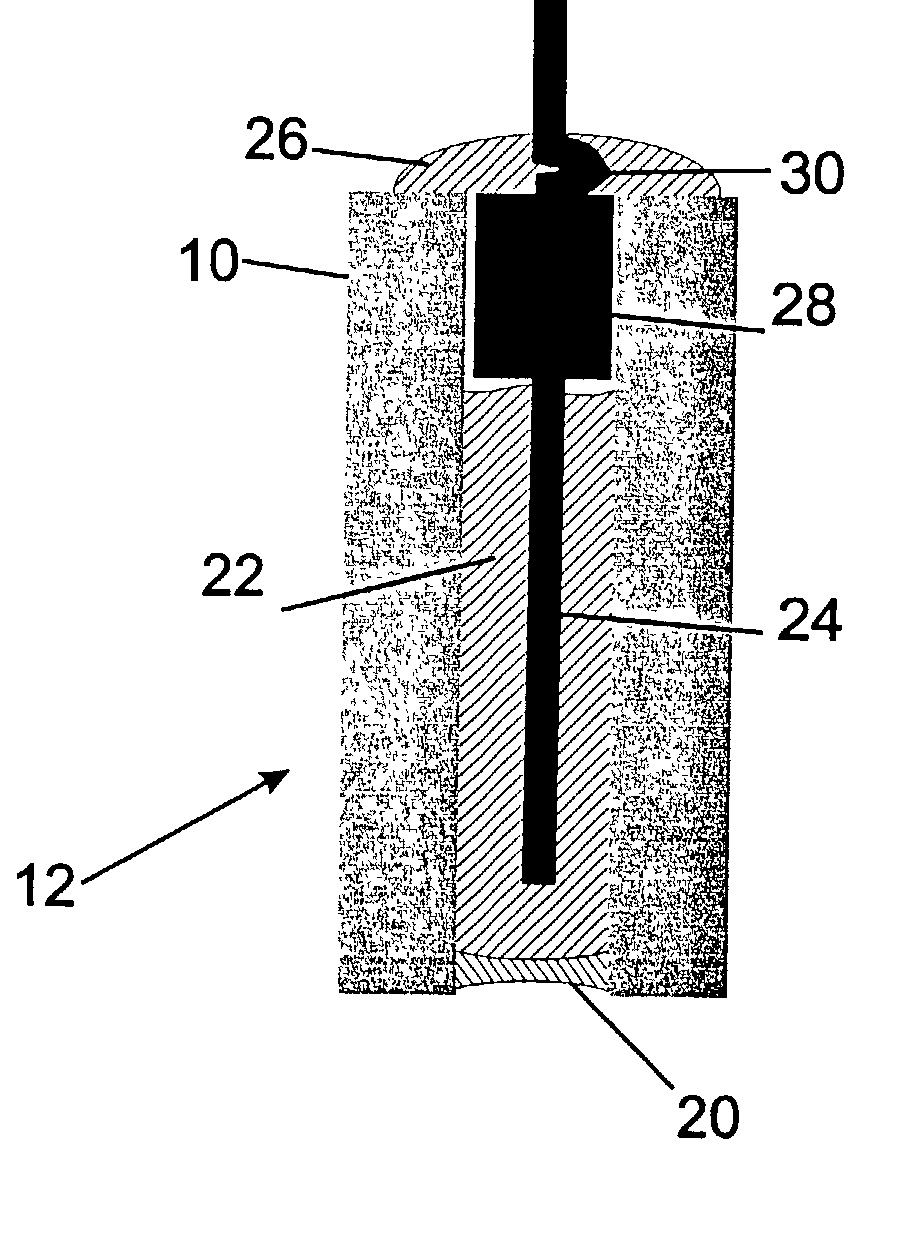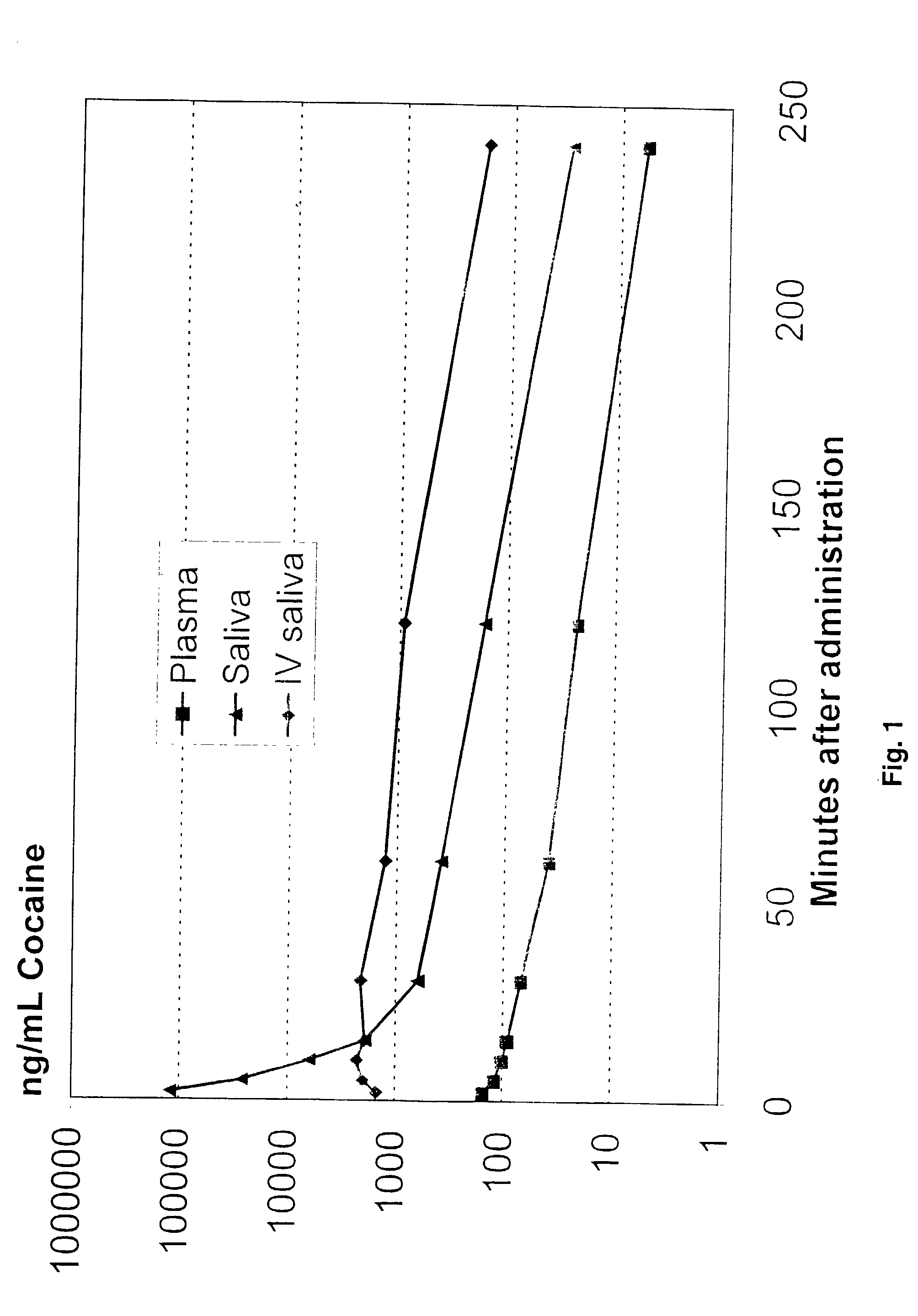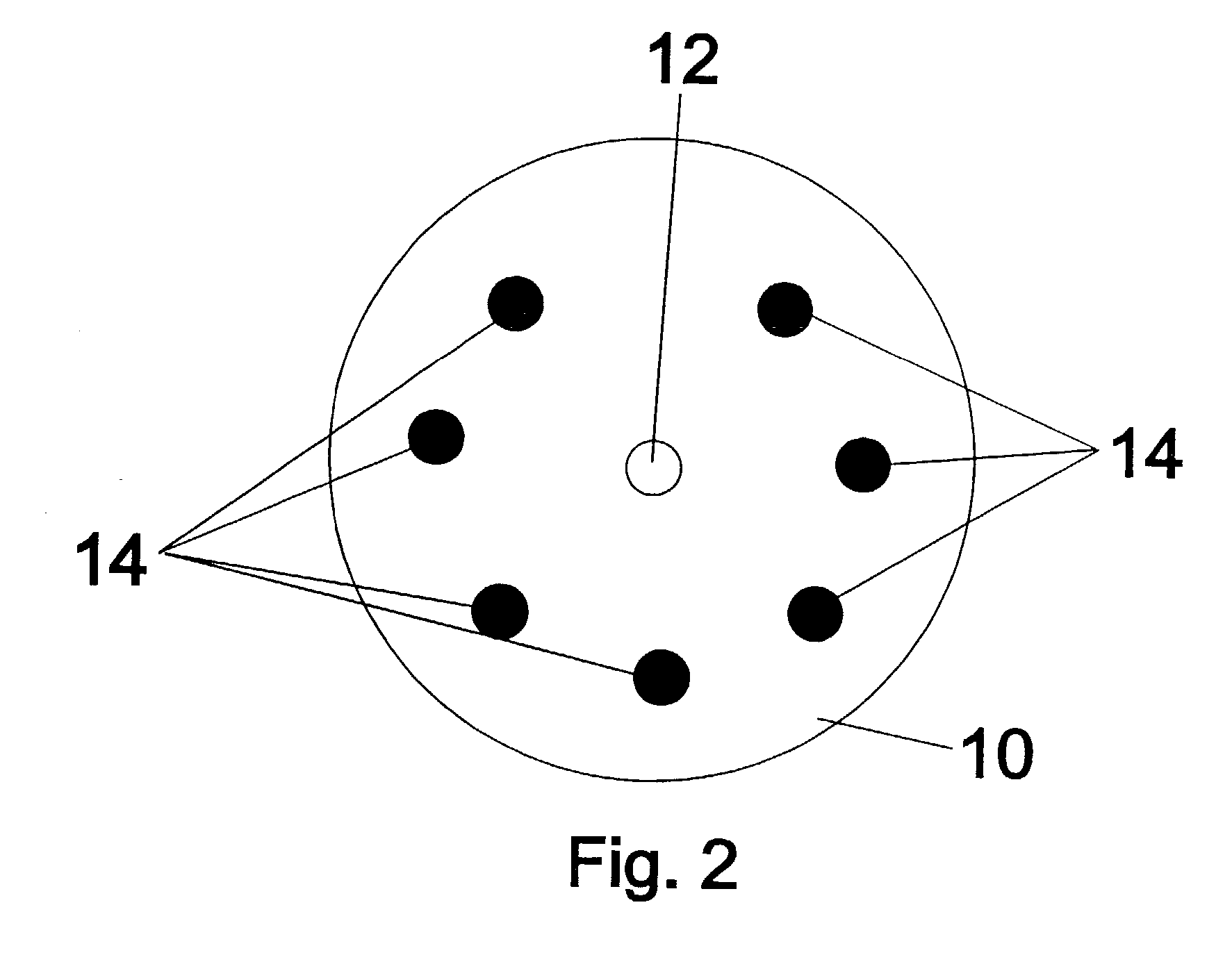Ion selective electrodes for direct organic drug analysis in saliva, sweat, and surface wipes
a technology of organic drugs and electrodes, applied in the field of ion selective electrodes, can solve the problems of grossly under-publicized use of drugs, lack of effective tools in the hands of law enforcement officers, and the inability to provide overt signs of use of other drugs
- Summary
- Abstract
- Description
- Claims
- Application Information
AI Technical Summary
Problems solved by technology
Method used
Image
Examples
example 2
Membrane Composition for Sensing Electrode
[0056] Table 2 shows the response and limit of detection for various membrane compositions. Table 3 shows average mV responses at 500 ng / mL (1.65.times.10.sup.-6 M free base) cocaine for a series of liquid filled electrodes having varying membrane compositions. Though the number of replicate sensors in this study is small and relative standard deviations are usually large, some general trends are apparent. First, with the cocaine cobalt isothiocyanate, larger amounts of plasticizer, up to a 1:2 PVC:sebacate ratio and a 1:3.5 PVC:Santovac 5 / sebacate mix ratio result in electrodes with approximately double the response voltage from those for the 1:1 PVC:sebacate ratio. The opposite trend is shown for the cocaine chromium isothiocyanate with the lower 1:1 PVC:sebacate mix showing double the response of the 1:2 electrode. The 1:3.5 PVC:Santovac 5 / sebacate mix ratio with the cocaine chromium isothiocyanate ionophore, given the % relative standard...
example 3
n of Cocaine Cobalt Isothiocyanate to Cocaine Chromium Isothiocyante Carrier Membranes
[0060] An array of liquid filled cocaine electrodes using 0.M KCl as the internal filling solution were prepared using a 1:2 cocaine chromium isothiocyanate:Sebacate ratio for three electrodes and a 1:1 cocaine cobalt isothiocyanate:Sebacate ratio for the other three electrodes. The commercial saturate calomel electrode was used as a reference. The buffer was 50 mM sodium acetate, pH 4.5. The calibration curves are shown in FIG. 6 as an average of the three electrodes. The performance advantage of the cocaine cobalt isothiocyanate electrode is clear.
example 4
n with Cocaine Electrodes Developed by Other Researchers
[0061] The cocaine electrodes of the present invention show similar characteristics to those developed by others with the added benefit of lower detection limits and faster response times. Table 4 summarizes and compares the cocaine cobalt isothiocyanate electrode preparation (1.1.5 sebacate) with the most sensitive electrodes developed by Elnemma et al., Campanella et al. and Watanabe et al. All of the studies show relatively quick response times and Nernstian behavior with slopes of voltage changes with respect to concentration decades near the theoretical value of 59 mV per decade. As shown in FIG. 7, the present invention typically shows a 5-sec or less response time to achieve 97% of the final response value; however, electrodes with responses in the 30-60 sec time frame (for liquid filled) are sometimes encountered. Part of the response time variation may be a result of differences in membrane thickness (for the wire coat...
PUM
| Property | Measurement | Unit |
|---|---|---|
| pKa | aaaaa | aaaaa |
| temperature | aaaaa | aaaaa |
| voltage | aaaaa | aaaaa |
Abstract
Description
Claims
Application Information
 Login to View More
Login to View More - R&D
- Intellectual Property
- Life Sciences
- Materials
- Tech Scout
- Unparalleled Data Quality
- Higher Quality Content
- 60% Fewer Hallucinations
Browse by: Latest US Patents, China's latest patents, Technical Efficacy Thesaurus, Application Domain, Technology Topic, Popular Technical Reports.
© 2025 PatSnap. All rights reserved.Legal|Privacy policy|Modern Slavery Act Transparency Statement|Sitemap|About US| Contact US: help@patsnap.com



